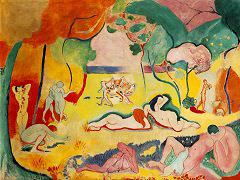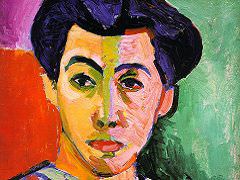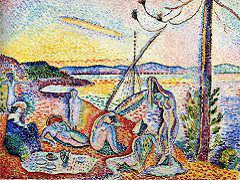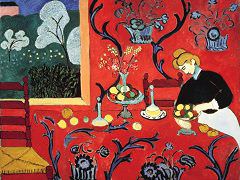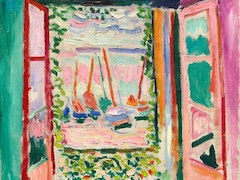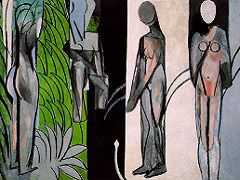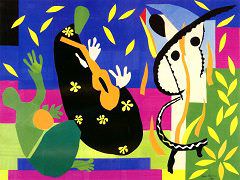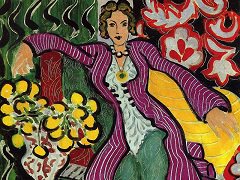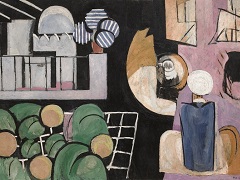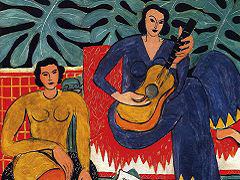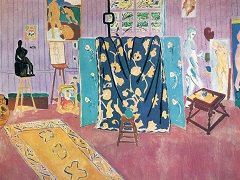The Path in the Bois de Boulogne, 1903 by Henri Matisse

If somewhat overshadowed by the great figure compositions, landscapes occupy an extremely important role at several moments in the artist's career. The present painting, with its dense foliage emphasized by the massive, almost Courbet-like facture, owes much to the study of Cezanne and thus complements Matisse's early efforts at monumental nudes in a Cezannesque manner. In fact, the present composition is closely related to one of the older artist's favorite motifs, the bend in a road leading to a village. Matisse's most notable change in this theme is that he selected a path in a park or garden rather than a simple country lane leading to a humble village, with all its implications of rustic toil. Given many of Matisse's later landscapes, including those framed by an open window, which are mainly of parks and gardens - that is to say, bits of cultivated, artificial paradise - the early appearance of this motif is particularly impressive. Moreover, this preference of Matisse's for nature in its cultivated state related closely to the evolution of an arcadian paradisial vision throughout his career.
Compared with the important series of small landscapes done by Matisse during his protracted stays in Corsica and Toulouse in 1898, paintings that are aptly denoted as Proto-Fauve, the color here is somber. The purple path and the stream at the right are these major features that hold everything together. Nevertheless, they are overshadowed by the frequently shapeless mass of foliage. Curiously un-Cezannesque is the absence of powerful intertwining limbs and twigs that might otherwise have given a more skeletal organization to the picture.

